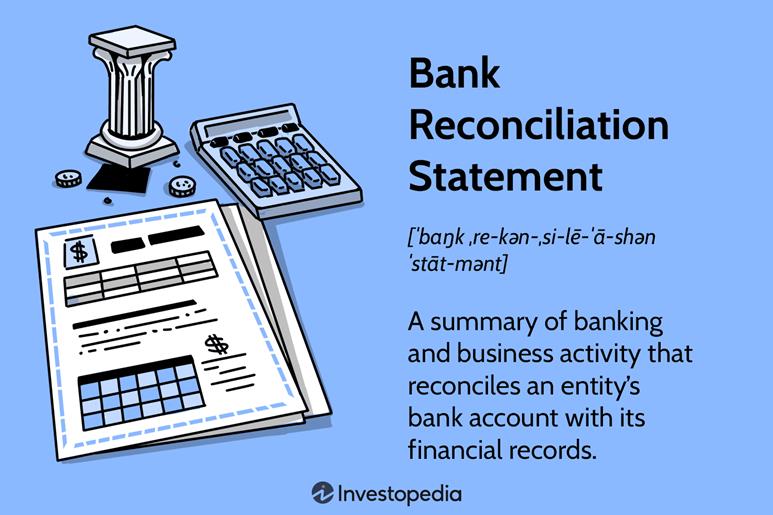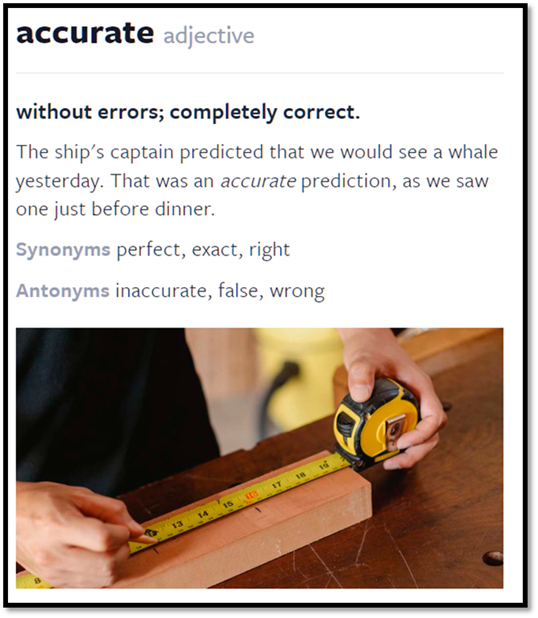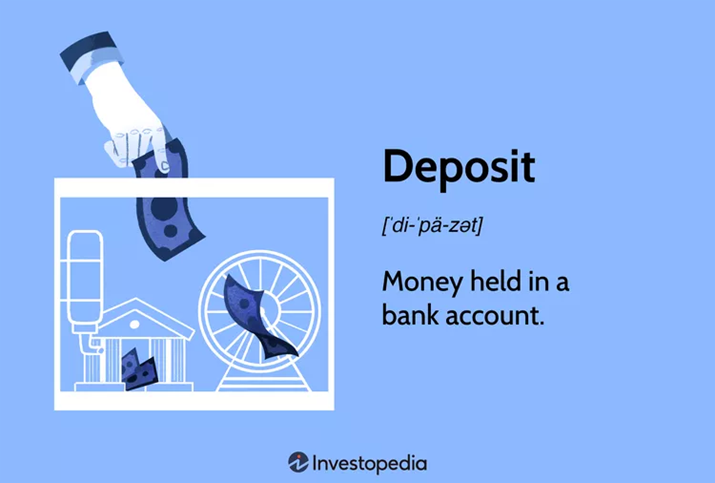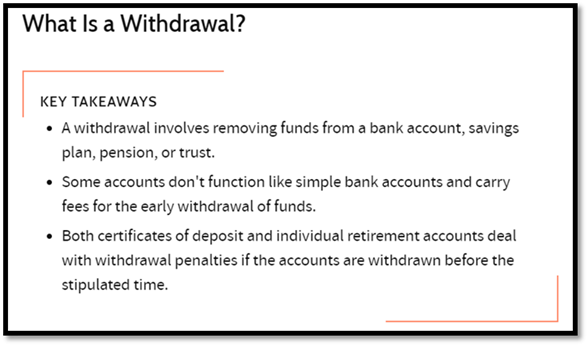
Reconciling Bank
Statements
Learning
Objective
In this lesson, we will explore the crucial
skill of bank reconciliation, a key aspect of financial literacy in today's
digital and manual banking world. You will learn how to compare your own
transaction records with your monthly bank statement, a process essential for
accurate financial management. This comparison ensures that every credit (money
in) and debit (money out), as well as other transactions in your checking
account, are correctly recorded and accounted for. By mastering this skill, you
will be able to identify any errors or unauthorized transactions, thereby
maintaining an accurate and reliable record of your financial activities. This
understanding is not just about keeping numbers in check; it’s about developing
a responsible approach to managing your finances, which is crucial for your
current and future financial health. Let's dive into the key terms like
checking account, checkbook register, credits, debits, and the process of
reconciling, to prepare you for the Interactive Account Balance Activity. This
skill forms the foundation for effective financial planning and budgeting,
enhancing your ability to navigate the financial world with confidence and
precision.
Understanding the Importance of Bank
Reconciliation
In the digital age, banking involves both
digital and manual transactions. Learning to reconcile bank statements is
essential. Reconciliation means comparing your bank statement—a monthly summary
of transactions in your account—with your records. This process ensures the
accuracy of your financial management and identifies any potential errors or
unauthorized transactions.
Let's dive into the key terms and concepts that
will prepare you for the Interactive Account Balance Activity.
Key Terms and Definitions
1.
Checking Account: This is where your
money journey starts. A checking account is like a safe home for your money,
where you can easily access it through checks, debit cards, and ATMs.
2.
Checkbook Register: Think of this as your
financial diary. It’s a booklet or a digital log where you note down all the
money you put in (deposit) or take out (withdraw) from your checking account.
3.
Credit (in banking): This is good news in
banking! A credit is any money that comes into your account, like when you
deposit a check or receive your paycheck.
4.
Debit: The opposite of
credit, a debit is any amount you take out from your account. This could be
when you buy something, pay a bill, or withdraw cash.
5.
Balance: This is the amount of
money you have in your checking account at any given time. Think of it as a
snapshot of your financial status.
6.
Transaction: Any action that
changes the amount of money in your bank account, like depositing money or
withdrawing it, is a transaction.
7.
Reconciling: This is like being a
financial detective. You make sure that what you wrote in your checkbook
register matches the bank statement.
8.
Bank Statement: This is a monthly
report from your bank. It lists all the transactions that happened in your account
over a certain period.
9.
Outstanding Transaction: Sometimes, you might
note a transaction in your register, but it doesn’t show up immediately on the
bank statement. This is an outstanding transaction.
10.
Overdraft: This is something to
avoid. An overdraft happens when you spend more money than what’s in your
account, causing your balance to drop below zero.

Key Concepts in Account Balancing
·
Importance of Accuracy: Always be precise in
recording your transactions. Knowing your exact account balance helps you make
smart financial decisions.
·
Regular Reconciliation: Frequently compare
your checkbook register with the bank statement. This helps catch any mistakes
or transactions you don’t recognize.
·
Understanding the Flow
of Money:
It’s crucial to know how each transaction affects your balance. Remember,
credits increase your balance, while debits decrease it.
·
Responsibility in
Banking:
Managing your account responsibly helps avoid problems like overdraft fees and
improves your financial management skills.
·
Financial Tracking: Balancing your
account is a key skill for budgeting and tracking your expenses. It gives you a
clear picture of your financial habits and helps you plan better.

In summary,
understanding these key terms and concepts in economics is like learning the
ABCs of your financial world. A checking account is your money's home base, and
the checkbook register is your tool to track its comings and goings. Credits
and debits are the main actors, playing out the scenes of your financial story.
The balance is your financial snapshot, giving you a clear picture of where you
stand. Regularly engaging in transactions, you navigate through the financial
landscape, with reconciling acting as your compass to ensure you are on the
right track. Bank statements serve as monthly updates, while outstanding transactions
and overdrafts are the twists and turns you need to manage. By prioritizing
accuracy, regular reconciliation, understanding the flow of money, responsible
banking, and financial tracking, you equip yourself with essential skills for
effective account balancing. These practices not only keep your financial
journey on course but also lay a strong foundation for your future money
management adventures.
Reconciling Bank Statements: The Process
Managing money might
seem tricky, but it’s like keeping track of your game scores or grades. One
important skill is reconciling bank statements. It's like making sure the
points you scored in a game match the official scorecard. Here’s a step-by-step
guide to make sure what you think you have in your bank matches what the bank
says you have. This way, you can spot mistakes or unexpected charges early on.

Easy Steps to Reconcile Your Bank Statements
1.
Gather Your Tools: Just like you gather your books for homework, get your bank statement
and your own record of what you think you've spent or saved (like a checkbook
register).
2.
Starting Lineup: Check the starting balance on your bank statement. It should be the
same as the last number in your own records.
3.
Checking Your Scores
(Deposits): Every time you add money to your account, it’s
like scoring points. Make sure your bank statement shows these ‘points’ just
like your own record does.
4.
Reviewing Your Spends
(Withdrawals): Look at the money you’ve spent
(withdrawn). This includes buying stuff with your debit card. Every spend
should be listed both in your record and the bank statement.
5.
Fees and Bonuses
(Fees/Interest): Sometimes, banks take small amounts
as fees or give you interest. These should also be in your records.
6.
Spotting Differences
(Discrepancies): If something’s in your record but
not on the bank statement (or the other way around), mark it. This is like
finding a mismatch in a puzzle.
7.
Fixing Mistakes
(Adjustments): If you find differences, correct
them in your records. Maybe you forgot to write something down, or the bank
made a mistake.
8.
Final Score (Reconcile
Total Balance): After all the checks, your own final
balance should match the bank statement’s final balance.

Why This Matters
Reconciling your bank
statements is like being the referee of your own finances. By doing this
regularly, you make sure there are no surprises in your account. It helps you
understand where your money is going, and you’ll quickly notice if something’s
wrong, like if you were charged twice for something. Plus, it’s a great habit
for when you manage bigger budgets in the future. So, grab your statements and
start reconciling – it’s a key play in the game of managing your money!
Conclusion: Ready for the Interactive Activity!
Now that you are familiar with these key terms
and concepts, you are well-prepared to participate in the Interactive Account
Balance Activity. This activity will help you apply what you've learned in a
practical, engaging way. Remember, account balancing is not just about numbers;
it’s about being responsible, accurate, and aware of your financial health.
Let’s put these skills into practice and become savvy with our finances!
Step-by-Step Guide: Documenting Your Activity
1.
While Working on the
Activity:
As you go through the interactive activity, remember to take screenshots. These
pictures will capture different stages of your work.
2.
Preparing Your Document: After you've taken
all the screenshots, put them together in a single document. This will be like
a photo album of your activity process.
3.
Final Step: Once you have
finished the interactive activity and your document is ready, look for the last
question in this unit. Attach your document to this question.
Remember: Taking these screenshots and preparing the
document is an important part of your assignment, so make sure to do this as
you work through the activity. This will show your progress and understanding
of the task!
Read and click next to
complete the interactivity.